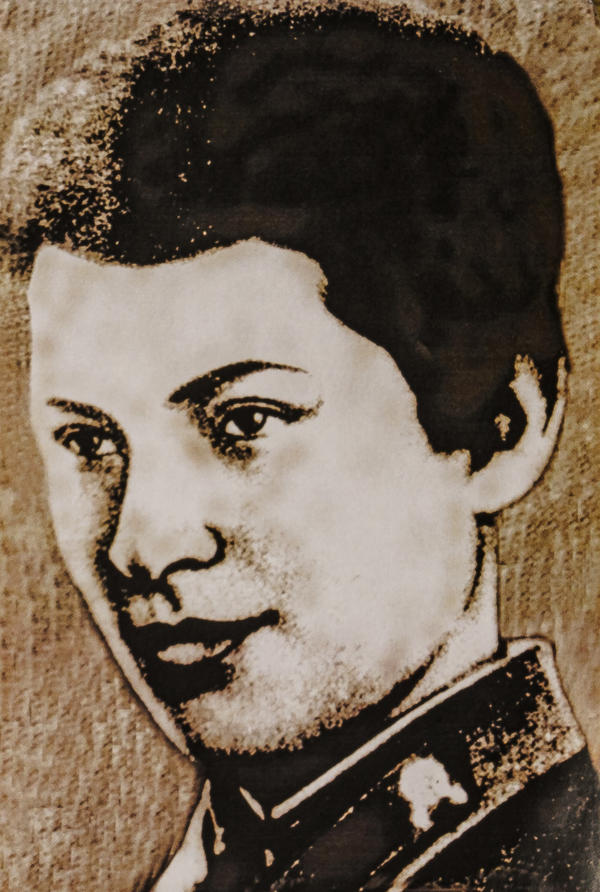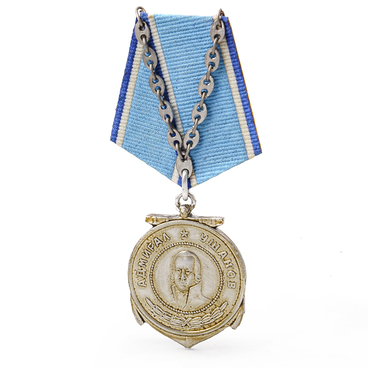Natalya Kovshova was born in the capital of Bashkiria, Ufa, on November 26, 1920. Some years later, the family moved to Moscow for good. The future distinguished sniper was born to the family of Bolsheviks.
Natalya’s father, Benedict Kovshov, took an active part in the Civil war and then was appointed to work for the Party. But his sympathy with Leon Trotsky, which he did not bother to conceal, eventually drew repressions against him. He ended up in the GULAG, a Soviet system of labor camps, where he spent several years. Arrested while his daughter still went to school, Benedict Kovshov was released only after the war.
His brother, Vitaly Kovshov, was a Civil War hero. He was killed, fighting bandits with Bulak-Balachowicz’s Group. Vitaly, whose contribution to the revolution cause was highly appreciated, rests at the Kremlin wall.
Natalya attended School No. 281. Now bearing a different number, 1284, the school remains in the same location at 8 Ulan Lane close to the metro station Sretensky Bulvar. The girl received her school graduation certificate a year before the war started. She chose not to waist her time and joined Orgaviaprom, combining aviation industrial facilities. An entry was made into her employment record, attesting to her first position of an inspector with the HR section.
The purposeful girl wanted to continue her training and dreamt to join a high-profile aviation institute in Moscow.
When Germany was announced to have attacked the Soviet Union, Natalya volunteered to go to the front. She went to a recruiting station, which sent her to a sniper school. Natalya saw action in October 1941.
She fought heroically in the Battle of Moscow as part of the 3rd Moscow Communist Rifle Division. January 1942 of the next winter saw Natalya Kovshova fighting in the Northwestern Front, where she was assigned to the 130th Rifle Division of the 1st Assault Army.
Official records suggest that sniper Kovshova killed 167 fascists, including a machine gun platoon and several snipers. She readily shared her experience with her comrades-in-arms, taught them marksmanship skills, how to take an aim and hold the gun.
On August 14, 1942, Natalya was killed in the Battle of Sutoki, a village in the Novgorod region. She fought that battle alongside her comrade-in-arms, sniper Mariya Polivanova. Both were seriously injured, but kept fighting the enemy. When they ran out of ammunition, they refused to surrender and exploded themselves with grenades, taking the lives of several enemy soldiers with them.
Natalya’s grave is not far from the village of Korovitchino in the Novgorod region.
She was granted the title of the Hero of the Soviet Union posthumously for self-sacrifice and valor in combat. The award recommendation was signed on February 14, 1943.
Natalya’s father, Benedict Kovshov, took an active part in the Civil war and then was appointed to work for the Party. But his sympathy with Leon Trotsky, which he did not bother to conceal, eventually drew repressions against him. He ended up in the GULAG, a Soviet system of labor camps, where he spent several years. Arrested while his daughter still went to school, Benedict Kovshov was released only after the war.
His brother, Vitaly Kovshov, was a Civil War hero. He was killed, fighting bandits with Bulak-Balachowicz’s Group. Vitaly, whose contribution to the revolution cause was highly appreciated, rests at the Kremlin wall.
Natalya attended School No. 281. Now bearing a different number, 1284, the school remains in the same location at 8 Ulan Lane close to the metro station Sretensky Bulvar. The girl received her school graduation certificate a year before the war started. She chose not to waist her time and joined Orgaviaprom, combining aviation industrial facilities. An entry was made into her employment record, attesting to her first position of an inspector with the HR section.
The purposeful girl wanted to continue her training and dreamt to join a high-profile aviation institute in Moscow.
When Germany was announced to have attacked the Soviet Union, Natalya volunteered to go to the front. She went to a recruiting station, which sent her to a sniper school. Natalya saw action in October 1941.
She fought heroically in the Battle of Moscow as part of the 3rd Moscow Communist Rifle Division. January 1942 of the next winter saw Natalya Kovshova fighting in the Northwestern Front, where she was assigned to the 130th Rifle Division of the 1st Assault Army.
Official records suggest that sniper Kovshova killed 167 fascists, including a machine gun platoon and several snipers. She readily shared her experience with her comrades-in-arms, taught them marksmanship skills, how to take an aim and hold the gun.
On August 14, 1942, Natalya was killed in the Battle of Sutoki, a village in the Novgorod region. She fought that battle alongside her comrade-in-arms, sniper Mariya Polivanova. Both were seriously injured, but kept fighting the enemy. When they ran out of ammunition, they refused to surrender and exploded themselves with grenades, taking the lives of several enemy soldiers with them.
Natalya’s grave is not far from the village of Korovitchino in the Novgorod region.
She was granted the title of the Hero of the Soviet Union posthumously for self-sacrifice and valor in combat. The award recommendation was signed on February 14, 1943.



